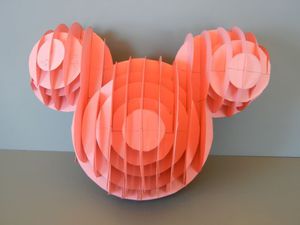First Day of the Semester: Good Activities
Written by: Dr. Volker Ecke and Dr. Christine von Renesse.
 For the first day especially, we choose investigations that are easy to understand but deep in content, with multiple entry points. It's helpful if the investigations do not require extensive use of formal algebra; in my experience, you can hear students' minds shutting down as soon as they see that. In short, we want investigations that the students can be successful with. The following problems are a few that we have found to be good starter investigations: the Pennies and paperclips game, the Human Calculator, the 9's finger trick, the Human Knot, or some of the activities we ran at the JMM booth (PDF handouts at end the of this blog).
For the first day especially, we choose investigations that are easy to understand but deep in content, with multiple entry points. It's helpful if the investigations do not require extensive use of formal algebra; in my experience, you can hear students' minds shutting down as soon as they see that. In short, we want investigations that the students can be successful with. The following problems are a few that we have found to be good starter investigations: the Pennies and paperclips game, the Human Calculator, the 9's finger trick, the Human Knot, or some of the activities we ran at the JMM booth (PDF handouts at end the of this blog).
The Human Calculator
In the following video clip, you can see Julian Fleron perform a trick about adding lots of large number really, really quickly. The students need to figure out how and why the trick works. In the first week, each student has to visit his office, perform the trick, and explain why it works. This has the added advantage that the students now know where his office is, have already interacted with him there, lessening the hurdle for future interactions.
The 9's Finger Trick
In this short clip from a movie, "Stand and Deliver," the character Jaime Escalante shows his students a finger trick for multiplying by 9's. Our students need to figure out how and why this trick works. This could lead to the first writing assignment.
Symmetry Dance Activity
In this short clip, Christine von Renesse introduces a dance symmetry activity. Getting up and moving together in the first class also helps create community in the classroom. This is the start of a longer series of investigations, as outlined in this handout:
![]() Dancing symmetry
Dancing symmetry
Handouts
Selected handouts of first day activities are available here:
We have also created a single-document collection of these ![]() Good Starter Activities.
Good Starter Activities.
These first day investigations could launch a longer series of activities that would continue for a few classes. For example, the symmetry dance activity can extend for several more classes. Or they could be separate investigations that mostly introduce the types of routines and activities we'll be engaged in (reasoning, explaining, writing, ...).
